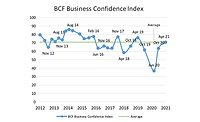Canadian Paint and Coatings Industry Succeeds in Reducing Low-Level VOC Emissions

OTTAWA, Ontario – Environment Canada’s recently completed evaluation of the VOC Concentration Limits for Architectural Coatings Regulations reveals that the Canadian paint and coatings industry has significantly reduced low-level emissions over the past four years. The study was done to evaluate the performance four years after the regulations came into force. “We were most pleased that the VOC testing confirmed the industry met the expectations with respect to the requirements established under the VOC regulations for the paint and coatings industry,” commented Gary LeRoux, President and CEO of CPCA.
Four indicators were used to assess the performance of the architectural coatings VOC regulations: percentage of products meeting the regulatory standards; marketplace availability of lower VOC products before and after the regulations; reduction of VOC emissions for the sector before and after the regulations; and Canada’s overall performance in VOC reduction and alignment with other jurisdictions, particularly in North America. Environment Canada’s accredited laboratories did the testing for the 10 main architectural coatings categories under the VOC regulations. The top 46 architectural paint manufacturing companies were confidentially surveyed for detailed VOC information. Ten of the responding companies were among the top 12 that represent 70 percent of the market size in Canada. “It was clear that a detailed qualitative survey and random sampling of paint products sold by the large manufacturers enhanced the credibility of the study,” said LeRoux.
The VOC emissions from paint dropped by 16 kilotonnes in 2014 from 57 kilotonnes in 2005, representing a decrease in emissions of 41 kilotonnes. This represents a reduction of 73.6 percent in VOC emissions from the projected emissions for 2014. “By any measure, this is a success for industry and shows that the paint and coatings industry in Canada has lived up to the standards set by the regulations and indeed greatly exceeded the government’s own expectations,” said LeRoux.
Virtually all waterborne products met the VOC limits in their respective categories. However, there are some challenges for solventborne products still on the market in terms of VOC reductions for that segment, especially with respect to waterproofing and medium- and high-gloss solventborne products. Once 100 percent reductions are achieved in this group, there will be an additional two-kilotonne reduction in VOC emissions. According to CPCA survey results, solventborne products represent less than 10 percent of the total national coatings market of more than 10,000 architectural product lines sold in Canada.
Looking for a reprint of this article?
From high-res PDFs to custom plaques, order your copy today!





